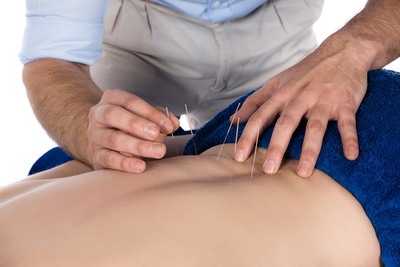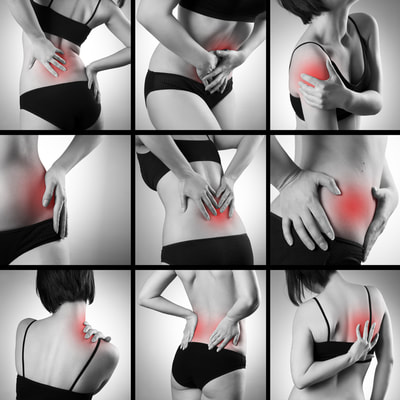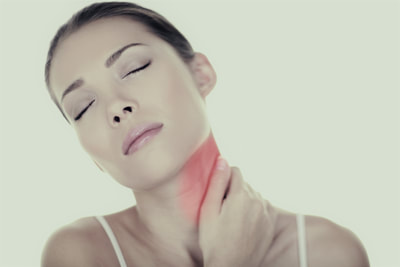DRY NEEDLING
|
Dr Janet Travels coined the phrase ‘Dry Needling’ in the 1940s, and her success with this technique led her to become US President JFK’s physician at the White House. To be fair, the Chinese have been using Acupuncture needles long before Western Medicine had a clue about this type of treatment. Although the instruments/needles used in Dry Needling and Acupuncture are the same, the theory behind the two are vastly different, and in this article only Dry Needling will be considered.
Robert D Gerwin MD states that “Myofascial pain is arguably the most common cause of pain to afflict humankind. It is a pervasive musculoskeletal pain that is associated with a wide variety of ills: tension-type and migraine headaches, cervicogenic headache, shoulder pain in frozen shoulder, in rotator cuff injuries, in hemiplegic shoulder dysfunction, in non-specific low back pain, in lumbar and cervical radiculopathy, in pelvic pain syndromes, in repetitive strain injuries, and the list can go on and on.” [Incidentally most of this information comes from a comprehensive publication by Jan Dommerholt “Trigger Point Dry Needling: An Evidence and Clinical-Based Approach.”] |
Below is a video on Dry Needling. A bit more covering would be good on the first video, but if you have not experienced dry needling, this is how it happens. The second video gives some technical data on Trigger Point Therapy, which is where and why we insert the needle/thumb in very specific points. Incidentally, dry needling must not be confused with Acupuncture. As previously stated on the Home Page, massage/trigger point therapy is my preferred treatment protocol. However, if requested, and/or it is considered necessary and agreed upon, dry needling is utilised to achieve the best result. There are times that the pressure required to release the Trigger Point may cause pain that is beyond the comfort zone, and on those occasions dry needling may be a more acceptable alternative.
|
|
|
Myofascial Pain
As you can see, Myofascial pain is the main source of muscle aches and pains, raising the question - what is myofascial pain? The following description of Myofascial pain is by the Mayoclinic, and helps link chronic myofascial pain with active TrPs [Trigger Points]; and of course TrPs are the target of the needles used in Dry Needling.
“Myofascial pain syndrome is a chronic pain disorder. In this condition, pressure on sensitive points in your muscles TrPs causes pain in the muscle and sometimes in seemingly unrelated parts of your body. This is called referred pain. While nearly everyone has experienced muscle tension pain, the discomfort associated with myofascial pain syndrome persists or worsens. Treatment options include physical therapy and trigger point injections. Pain medications and relaxation techniques also can help.
“Myofascial pain syndrome is a chronic pain disorder. In this condition, pressure on sensitive points in your muscles TrPs causes pain in the muscle and sometimes in seemingly unrelated parts of your body. This is called referred pain. While nearly everyone has experienced muscle tension pain, the discomfort associated with myofascial pain syndrome persists or worsens. Treatment options include physical therapy and trigger point injections. Pain medications and relaxation techniques also can help.
Symptoms
Signs and symptoms of myofascial pain syndrome may include:
- Deep, aching pain in a muscle
- Pain that persists or worsen
- A tender knot in a muscle
- Difficulty sleeping due to pain”
TrPs Trigger Points
As pointed out by the Mayoclinic, myofascial pain is due to active trigger points. Therefore, an understanding of trigger points is necessary to appreciate their role in pain syndromes.
- Again quoting Gerwin R.D. MD “Active TrPs [Trigger Points] have a unique biochemical milieu [environment] of substances known to be associated with pain, inflammation and intercellular signalling.
- Ultrasound imaging can be used to visualize TrPs, and for objective clinical assessment in conjunction with digital palpation, TrPs are stiffer than surrounding tissue [which is why a skilful therapist can feel them].
- Gerwin R.D., Duranleau D. Ultrasound identification of the myofascial trigger point. Muscle Nerve. 1997;20:767–768. Gerwin R.D., Dommerholt https://www.mayoclinic.org/diseases-conditions/myofascial-pain-syndrome/symptoms-causes/syc-20375444



